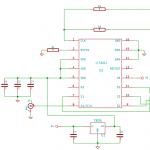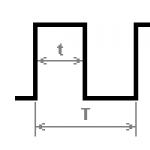Long term use hard drives During the process of writing and erasing data, disk fragmentation occurs. Simply put, in some areas of the disk, empty space may appear, into which the system tries to write the file the user needs every time. The problem is that if this file is too large, then part of it will be written to one place and part to another.
This article will tell you how to defragment a disk on Windows 10. We will also look in more detail at whether disk defragmentation is needed at all or why. This can be done both using the operating system itself and using third party programs. Regardless of the method, the essence of the process itself remains the same.
To be honest, before performing defragmentation, users should figure out whether they need it. If you use hard drive for a very long time and have not fully formatted it, then you definitely need to defragment it. Since the user often deletes or changes files not in the order in which they were written to hard drive. Because of this, so-called memory gaps appear on the disk, where the system tries to write other files. If in that place there is not enough disk space the file will be located in several parts.
If you try to access such a file recorded on your hard drive this way, it will take you longer. Please note that the more full your hard drive is, the more file fragmentation zones it will have. The figure shows how the files before the defragmentation process were written on the hard drive in fragments (this is where the name of the process comes from), and after defragmentation everything was in perfect order.
The process itself is that all files that are not written sequentially will be overwritten. And all empty clusters will disappear, since all the necessary files in these places will be overwritten. This will speed up the operating time of the system as a whole, since when running such files the system will not have to search for pieces throughout the entire file system.
How to run disk defragmentation

The disk optimization window can be found in the updated system search. Please note that by default defragmentation is set to automatic mode, which is performed weekly background. In principle, it is convenient and should not slow down the system much, allowing you to work comfortably at the computer.
Defraggler
There are many programs that can help you with disk defragmentation automatically. We would like to draw your attention to free utility Defraggler. You can download it without problems from the official website of the developer Piriform. The program is compatible with all versions of the operating system Windows systems 10.
Command line
To be able to defragment disks in the command line window, just run just a few commands. For beginners, we recommend using the previous method, since the interface of the classic disk optimization tool is more understandable there.
Run the desktop command line application as an administrator. Next, run the commands below one by one to start the process. Before executing, carefully read all the commands and the parameters specified for them.
- C:\WINDOWS\system32>defrag /?— Get help on the defragmentation process in a command prompt window. We recommend that you familiarize yourself with the additional parameters of the commands executed further;
- defrag C:/A— performing an analysis of the specified local disk. Shows how fragmented the selected disk is (in this case, the specified system disk). You can find out the level of fragmentation of all computer disks;
- defrag /C /H /V— performing an operation for all volumes in advanced mode, displaying detailed fragmentation statistics at the end of the process.
While defragmenting disks using this method, do not close the Command Prompt window. Only after the defragmentation process has completed using the command line can you close the window.
Conclusion
When using a HDD, information is constantly recorded/erased. But the disk surface is not filled sequentially, but in parts, resulting in fragmentation. She is one of the main reasons slow work computer, so you need to know how to defragment a disk on Windows 10 to speed up your PC and increase the speed of data access.
Why is defragmentation needed?
This procedure allows you to collect one file “in a heap”, writing information about it sequentially onto the surface magnetic disk. After that operating system you don’t have to first assemble the file piece by piece and only then use it. Therefore, after defragmenting the HDD, the speed of the PC will increase (you will also find this article useful for improving the performance of the device).
How to start a process on Windows 10?
Defragmentation in Windows 10 is performed by standard tools or programs developed by third-party companies.
Established funds
The new OS, like previous versions, has a built-in Disk Defragmenter utility.
- This computer → RMB on any disk → Properties → Tools tab → Optimize.
- In the "Disk Optimization" window, select the one you want to defragment → Analyze.
- After the evaluation process, if the fragmentation is more than 5% - 7%, click "Optimize".

Important! Windows 10 is set to automatically defragment disks by default. You can change the optimization schedule or disable it altogether in the “Optimization by schedule” block by clicking the “Change parameters” button and specifying the desired time.

The time of the procedure depends on HDD speeds, fragmentation and how busy the disk is (it needs to have about 10% - 15% of free space).
Third party programs
Third-party programs provide the user with more options for setting up and performing defragmentation.
Defraggler
The program shows the fragmentation map and HDD status, and also prepares a list of “partitioned” files. It carries out the process according to the user's specified parameters. This program is much more effective than the built-in utility. 
The tool has a similar interface and functionality to Defragger, and is able to optimize the file system by moving Windows files. This increases the speed of the computer. 
The SSD defragmentation process is performed on a different principle, so the classic utility is harmful solid state drive(read the article on how to configure it correctly). In addition, the speed of reading data from all SSD cells is the same. Therefore, information fragmentation does not slow down your computer. When installing this type of media on your computer, disable automatic disk optimization.
Video
The video explains in detail how to defragment a disk. standard utility and another third-party program.
Conclusion
Defragmentation increases the speed of your computer. It “assembles” files into one whole after they are split when recording to the HDD. You can perform optimization using the built-in utility or programs from third-party developers. But when using SSD storage, do not run this function because it is harmful to the drive.
Most users have heard the phrase disk defragmentation, including on Windows 10, but they don’t know what it is and why. Actually, everyone knows what a hard drive (screw) is needed for and its volume is remembered by heart.
The hard drive architecture consists of clusters - these are small parts for storing information. Our data is sequentially divided into small fragments and each placed in a separate cluster. The smaller the file size, the fewer clusters it occupies, and vice versa.
To better imagine clusters and the principle of their operation, let’s compare them with cells in a table. By the way, this zone is a common file table in which records from full description. And files and directories smaller than 1500 byte are located entirely in MFT (Master File Table). By deleting files, you clear the clusters - but they were stored in a chaotic order (cell 1, 15 and 23, etc.).
For example, you downloaded a movie in very good quality– about 10 Gb – it is divided into clusters and they must take their positions sequentially. When the full sequence is heavily loaded free space may not be. And so it collectively finds free cells and writes there - this process is called fragmentation. When contacting file hard the disk begins to assemble it piece by piece from different clusters - our cells - like a film cut into pieces. Naturally this slows down the work.
One of the common questions is: “Disk defragmentation on Windows 10 and what is it.” This is the process of optimizing clusters by creating a continuous sequence. This is how the logical circuit is restored - .
Is disk defragmentation necessary on Windows 10?
Starting from version 8 of the OS, this process was called optimization. It is carried out independently by the system according to the planned schedule and does not require intervention. Defragmentation may be necessary if your computer's performance has dropped. Read how on our website.
Still, you need to know where to find disk defragmentation on Windows 10. You need to go to “Explorer” → “This_Computer” → select any disk → right-click “Properties” → “Tools” → “Optimize”.

 The “Disk Optimization” dialog box will open in front of you, where you can see several buttons, including information about the previous launch and the current state. First, you need to know the state of affairs. Select the drive you need (if you don't select it, it will affect everyone). To do this, click “Analyze”.
The “Disk Optimization” dialog box will open in front of you, where you can see several buttons, including information about the previous launch and the current state. First, you need to know the state of affairs. Select the drive you need (if you don't select it, it will affect everyone). To do this, click “Analyze”.
 The analysis will not take very long - if the hard drive is new or has been defragmented previously. Afterwards you will see what percentage of fragmentation. If it's small, there's no need to optimize.
The analysis will not take very long - if the hard drive is new or has been defragmented previously. Afterwards you will see what percentage of fragmentation. If it's small, there's no need to optimize.
How to Defragment a Disk on Windows 10
To do this, click on the “Optimize” button and a forced process will occur, it is worth noting that it is not always fast. The program runs in the background and does not require your presence.

As a result, you can see what the percentage of movement is, how many passes there were in defragmentation - it is almost impossible to predict its number, there can be either 27 or 15 - depending on:
- computer specifications;
- hdd or ssd size;
- occupied volume;
- how effectively information is posted;
- number of file deletions and writes;
- frequency of analysis and defragmentation.

What to do if it doesn't work
There are cases when disk defragmentation does not start in Windows 10. There may be several reasons.
- One of the reasons is SSD. It does not need this procedure, since it is solid state and its operating principle is different from HDD. As for optimization, it is being done. The principle is that TRIM is enabled by default, a command that allows the OS to report that blocks in the file system do not exist and that they can be physically deleted, extending their lifespan. In some cases, SSD defragmentation is carried out automatically, if the security settings are enabled.
Decided to disable automatic defragmentation SSD drive in Windows 10, but don't know how? Select “Change parameters” → and in “Optimization schedule” uncheck “Run on a schedule (recommended)” → OK. By the way, the principle of disabling SSD and HDD disk defragmentation is the same; disabling it is also possible by stopping the service.


- Another reason why the process may not work is the installation and subsequent removal of a third-party defragmenter. First, you should check the condition system files: Right-click “Start” → “Command Prompt (Administrator)” → enter “sfc /scannow”.


If system files are damaged, restore them and run disk defragmentation on Windows 10. Otherwise, we continue to look for the cause.
- Let's check the status of the service: “Control Panel” → “Administration” → “Services” → in the list we find “Disk Optimization” → “Properties” → “Startup Type” → “Manual” → OK.

- Still no way to defragment your disk on Windows 10? Let's check the associated services, the status is "Automatic" and they should be running:
- “Module for launching DCOM server processes”;
- "RPC Endpoint Mapper";
- “Remote Procedure Call (RPC).”
- Still having trouble defragmenting your disk? Check the paging file settings: “Control Panel” → “Advanced system settings” → “Advanced” → “Options” → “Advanced” tab → “Change” → the “Automatically select the paging file size” checkbox should be checked → OK.


Not working? Check the screw for critical errors and restore the OS.
Is it necessary to defragment the registry?
In the process of working for Windows computer 10 records and deletes information. Moreover, files are not written to the disk sequentially. For example, the sectors storing the film can be scattered over the entire surface of the magnetic plate, which is a huge disadvantage file NTFS systems and a consequence of the slowdown work hard disk, as well as the cause of its accelerated wear. To read a document scattered across the disk, the head needs to go through all the sectors storing fragments of the document, instead of sequentially reading its fragments one after another. And when the disk is more than 80% full, the fragmentation of files on it begins to grow exponentially, which further increases access time and HDD wear.
Unfortunately, it is impossible to avoid fragmentation, but it is not difficult to get rid of it. And Windows 10 offers for this special utility, with which most users have been familiar since the days of XP and G7.
Defragment the partition using “tens”
Defragmentation in Windows 10 is carried out using a utility built into the OS.
- To call it, you need to enter the corresponding search phrase in “Start” or call “Properties” of any volume through its context menu.
- As a result, a dialog box with tabs will appear.
- Switch to “Service”.
- Click on the icon that says “Optimize”.
A table will appear with a list of partitions and information about the last defragmentation run on each of them.
- Select the desired volume (it is recommended to start with the system volume) and click “Analyze”.

After ten seconds of waiting, we examine the results of scanning the interface.
- If the program determines that it requires defragmentation, click on the “Optimize” button.

- We minimize the application and go about our business while Windows 10 defragments.
To get rid of manual start Windows process 10 can automate disk optimization.
- Click “Change settings”.

- Check the “Run on a schedule” option.
- We select disks that will be defragmented automatically and the frequency at which optimization should be run.

- Click “OK” and close all windows.
Windows 10 will now support performance file system hard drive at the maximum level without user intervention.
Defragment disks using the command line
Defragmentation is also carried out. This method is not popular among users, but we will still pay attention to it.
- Call the command line with administrator privileges.

- Enter “defrag” to get help with application settings.
- After reviewing the list of command keys, enter the required sequence to complete the task.
The screenshot shows the result of entering the “defrag /a c:/” command, which analyzes the state of the file system of the “C:” drive.

For example, defragmentation of the system partition (“C:”) in Windows 10, combining free space and visualizing the process state, is performed with the command: “defrag /x /u c:”.

Programs from third-party developers are more convenient to use and powerful. For beginners I can recommend free application from the developers of CCleaner called Defraggler.

Free is more functional Smart program Defrag, which supports defragmentation of system files during boot and several algorithms for optimizing file locations (rarely used documents, such as movies, will be moved to the back of the disk, while frequently called documents will move closer to the center hard drive to reduce access time).

(Visited 8,649 times, 1 visits today)
Defragmentation of disks under Windows control 10 allows you to organize the arrangement of files on your hard drive in such a way as to maximize the amount of disk space and increase computer performance.
It's worth noting that in Windows 10 this tool is called " Disk optimization", so now defragmentation and disk optimization are almost equivalent concepts.
During defragmentation, all parts of files are moved to neighboring clusters. This makes it easier to access information and the computer runs faster.
The Optimize Drives tool includes features that let you work with various types carriers. Depending on what kind of hard drive you have (), Windows will automatically perform operations that are appropriate for your device.
In most cases, defragmenting the “C:” drive is enough, but if you often use files located on other partitions, you can perform this procedure for them too.
By default, disk optimization runs automatically on a schedule once a week. But you can also defragment manually.
There are several ways to optimize partitions in Windows 10. Let's look at 2 of them.
Defragmentation using the Optimize Disks tool
1. Launch Explorer ( Windows + E) and on the left in the menu tree open the item “ This computer».
2. Select drive “C:” or any other partition. Then on the tab " Control"run element" Optimize" As a result, the tool should load " Disk optimization».

This tool can also be launched in another way. To do this, you need to right-click on the target partition and context menu select " Properties».

Then in the window that opens you need to open the “ Service" and press the button " Optimize».

3. Select the disk that you want to defragment and click the button Optimize" The optimization process can take from several minutes to several hours depending on the size of the partition and the degree of file fragmentation.
Before this procedure, you can also click the " Analyze" to see the extent of disk fragmentation and decide whether to start this process.
If the partition is fragmented by less than 10% , then there is no need for optimization.

During the optimization process, you can continue to use your computer, although it is advisable to wait until it finishes.
Optimizing disks using the command line
1. Run Command Prompt as an administrator.
2. Enter the command diskpart and press Enter.
4. Find the drive you want to optimize in the list and make sure that the letter it is designated by matches the one in Windows Explorer. Enter the command exit and press Enter.

5. Run the commands below depending on your needs:
defrag C:/O– defragmentation of the “C:” drive (you can change it to any other partition);
defrag /C /O– defragmentation of all disks using a method corresponding to the media type (HDD or SSD).

The description and full syntax of the command can be found by running command line design " defrag /?».
In fact, there is another 3rd way to run disk defragmentation in Windows 10 - with using PowerShell. This method is for more advanced users and I think that the first two are quite enough for the average user.




